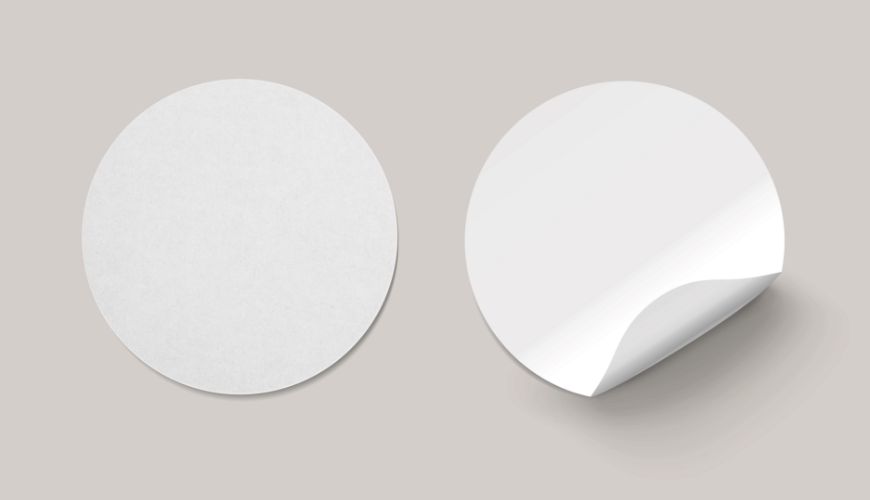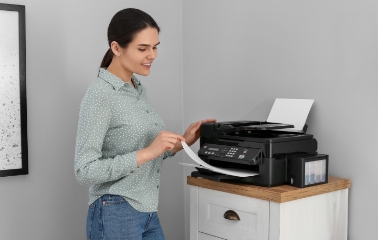Jump To Section
You’ve got a great product, but it doesn’t do anyone any good if your customers don’t know what you’re offering. A clear, concise ingredient label is more than just a list of what’s inside your product; it’s a crucial way to show your product is trustworthy and build a relationship with your customers.
Whether you’re packaging food items or cosmetics, an accurate ingredient label helps consumers know exactly what they’re getting. For food products, this means people can check for allergens or dietary preferences. For cosmetics, it means users can avoid ingredients that might cause skin reactions.
Once you know how to make ingredient labels, you can build customer trust by providing clear, informative labels. When people see that you’re transparent about what’s in your products, they’re more likely to feel confident in their purchase. Plus, well-made labels help you comply with legal requirements, avoiding potential issues down the line. Good ingredient labels are essential for both safety and customer satisfaction.
What Are Ingredient Labels?
Ingredient labels serve as a guide for consumers and are a legal requirement for many products.
What They Do
Ingredient labels list all the components that make up a product. For food items, this includes everything from the main ingredients to additives and preservatives. For cosmetics, it covers active and inert ingredients as well as fragrances and colorants. The labels’ main purpose is to inform consumers about what they are putting into their bodies or onto their skin. Good ingredient labels also help regulatory bodies ensure products are safe and comply with the law.
Why They’re Essential
For consumers, ingredient labels are crucial. They help people make informed choices, especially if they have allergies, dietary restrictions, or skin sensitivities. Knowing what’s in a product can prevent adverse reactions and promote better health. For regulatory bodies, ingredient labels are a way to keep products safe and standardized. They ensure that companies are transparent about what they’re selling and that they meet safety standards.
Step 1. Deciding What to Include on Your Label
If you’re wondering how to make ingredient labels, you must understand the regulations concerning what to include on your label. Creating ingredient labels isn’t just about listing what’s inside your product; it’s also about following the rules set by regulatory bodies. These rules ensure that your labels are clear, accurate, and helpful for consumers.
What the FDA and EU Say
The U.S. Food and Drug Administration (FDA) has specific requirements to help you know how to make food ingredient labels. These regulations can vary by product, and it’s the manufacturer’s responsibility to know and follow the guidelines. These rules help consumers make informed choices and avoid potential health risks.
The FDA and the European Union have guidelines for cosmetic ingredient labels. Again, it’s the manufacturer’s responsibility to understand and abide by these rules. Following these guidelines is crucial to ensure your products are safe and compliant with the law.
Sticking to these regulations isn’t just about avoiding fines or legal trouble. Compliance shows your customers you’re serious about their safety and well-being. It builds trust and credibility, which can set you apart from competitors who might cut corners.
Key Elements to Include
You should check with the responsible regulatory body to ensure full legal compliance, but, in general, there are several crucial elements that every ingredient label should have:
- List of Ingredients: This is the core of any ingredient label. Make sure to list everything that goes into your product, from the main ingredients to the smallest additives.
- Allergen Information: For food products, it’s essential to highlight any allergens. Common allergens include nuts, dairy, and gluten. This information helps consumers avoid potentially dangerous reactions.
- Nutritional Information: For food items, you also must provide nutritional information, including details like calories, fat content, and vitamins. This helps consumers make healthier choices. See our article on how to make nutritional facts labels for additional information.
- Expiration Dates and Batch Numbers: These are essential for food and cosmetic products. Expiration dates tell consumers how long the product is safe to use, while batch numbers help with tracking and recalls if needed.
- Manufacturer Details: Including the name and contact information of the manufacturer adds another layer of transparency. It lets consumers know who made the product and where to go if they have questions or concerns.

Step 2. Selecting the Label Material and Printing Method
Once you know what needs to go on your ingredient labels, the next step is choosing the right materials and printing methods. The material you choose and how you print your labels can affect their durability, legibility, and overall look. Let’s explore the options.
Choosing the Right Label Material
The first decision you’ll need to make is what type of material to use for your labels:
- Paper Labels: These are the most common and cost-effective options. They work well for products that won’t be exposed to moisture or rough handling.
- Glossy Clear Labels: These options let your products shine through.
- Waterproof Labels: Our weatherproof labels work great for water-resistant applications, including cosmetics.
- Brown Kraft Labels: These are ideal for conveying a folksy, homemade feeling.
Finding the Right Printing Method
Once you’ve chosen your label material, the next step is deciding how to print them. There are two primary types of printers to consider: inkjet printers and laser printers.
Inkjet Printers
These printers are great for producing high-quality, full-color labels. They spray tiny ink droplets onto the label material, allowing for vibrant colors and detailed images. Inkjet printers are versatile and can handle various label sizes and materials. However, the ink can smudge if it gets wet, so inkjet printers may not be the best choice for labels that will be exposed to moisture.
Laser Printers
Laser printers use a laser beam to produce an image on a drum, which is then transferred to the label material using toner. This method is excellent for creating sharp, clear text and images. Laser-printed labels are more resistant to smudging and fading compared to inkjet-printed labels. Laser printers are also generally faster and more cost-effective for large batches. However, they may not produce colors as vividly as inkjet printers.
Step 3. Designing Your Label
Now that you’ve chosen your materials and printing method, it’s time to design your ingredient labels. A well-designed label is informative and visually appealing. It should grab attention while providing all the necessary information in a clear and readable way. Here are some ideas to help you create the perfect label.
Label Layout and Design Tips
When designing your ingredient label, the layout and design are crucial. First and foremost, you’ll want to start with rectangular labels. Here are some other essential points to consider:
Importance of a Clear and Readable Font
Choose a font that is easy to read. Avoid overly decorative fonts that can make the text hard to decipher. Stick to clean, simple fonts like Arial or Helvetica for the main text. Ensure the font size is large enough to be read easily, even from a distance.
Using Colors and Graphics Effectively
Colors and graphics can make your label stand out, but they should be used wisely. While graphics and images can add visual interest, they should not overwhelm the text. Make sure any images used are high-quality and relevant to the product.
Ensuring Text Contrast for Readability
High contrast between the text and background is essential for readability. Light-colored text on a dark background or dark-colored text on a light background works best. Avoid using colors that are too similar, as this can make the text hard to read.
Design Tools
We offer free online label templates to help you design your ingredient labels. You can choose from Word, PDF, or an editable Canva™ template. Whatever your choice, you have the freedom to create labels that best convey your ingredients and other essential information.
Best Practices
When designing your ingredient label, keep these best practices in mind:
- Keep the Design Simple and Informative: A cluttered label can be overwhelming and hard to read. Keep the design simple and focus on providing the necessary information. Use bullet points or lists to organize the text and make it easier to scan.
- Align with Brand Aesthetics: Your label should reflect your brand’s identity. Use colors, graphics, and fonts that align with your brand’s look and feel. Design consistency helps build brand recognition and trust.
Step 4. Ensuring the Accuracy and Clarity of Your Ingredient Labels
Creating a visually appealing label is essential, but ensuring the information on it is accurate and clear is even more crucial. Accurate ingredient labels help build customer trust and keep you compliant with regulations. Here’s how to ensure your labels are error-free and easy to understand.
Double-Check Your Ingredient List
Double-checking your ingredient lists is one of the first steps in ensuring accuracy. Here are some ways to do that:
Cross-Reference with Product Formulations
Ensure the ingredient list on your label matches the actual formulation of your product. This involves cross-referencing the list with the recipe or formula used to create the product. Any discrepancies can lead to customer complaints or legal issues.
Consult With Suppliers and Manufacturers
If you source ingredients from suppliers, double-check with them to ensure you have the correct information. Sometimes, suppliers might change the composition of an ingredient, and it’s crucial to update your labels accordingly. Consulting with manufacturers can also help verify the ingredients listed are accurate and complete.
Proofread and Edit Your Labels
Once you have the correct ingredient list, the next step is to proofread and edit your labels to ensure they are error-free. Ingredient label errors can lead to misunderstandings and mistrust. For food products, a mistake in listing allergens could have serious health implications for consumers. For cosmetics, incorrect ingredient information can lead to skin reactions or other issues. Therefore, ensuring your labels are free of mistakes is vital.
Here are some helpful ways to make your labels are accurate:
- Spell Checkers and Grammar Tools: Use spell checkers and grammar tools like Grammarly to catch any spelling or grammatical errors.
- Peer Review: Have someone else review the label. A fresh pair of eyes can catch mistakes you might have overlooked.
- Read Aloud: Reading the label out loud can help you catch errors you might miss when reading silently.
- Checklists: Use a checklist to ensure all necessary information is there and correctly formatted. This can include verifying the ingredient list, allergen information, nutritional facts, and any other required details.
Once everything is correct, you can print and apply your ingredient labels.
Trust Premium Label Supply for All Your Label Needs
Now that you know how to make ingredient labels, you’re ready for the next step. We manufacture our high-quality label sheets to make your products shine. Whether you need waterproof labels for cosmetics or clear, easy-to-read labels for food products, we have the perfect solution for you. Browse our selection today to find the ideal label for your needs.
Frequently Asked Questions About How to Make Ingredient Labels
As a leading label manufacturer, Premium Label Supply fields numerous questions about how to make ingredient labels. Here are some common inquiries we receive.
Do I need to include the country of origin on my ingredient labels?
For many products, especially food items, including the country of origin is required by law in numerous countries. This helps consumers make informed choices and supports transparency. Check the specific regulations in your region to ensure compliance.
What size should my ingredient labels be?
The size of your ingredient labels depends on the size of your product packaging. However, the text should be large enough to be easily readable. Generally, a font size of at least 6 points is recommended, but larger is often better for readability.
Where do you manufacture your labels?
We make all our products, including the rectangular stickers used for ingredient labels, at our facility in Birmingham, Alabama.
Related Articles

Matte vs. Glossy Stickers: The Ultimate Guide
CIRCLE LABELS, RECTANGLE LABELS, SQUARE LABELS | April 4, 2024
Get a detailed comparison of glossy and matte stickers.

CIRCLE LABELS, RECTANGLE LABELS, SQUARE LABELS | January 29, 2024
Discover how the right label can elevate any candle.

How to Create a Shipping Label
SHIPPING LABELS | May 31, 2023
Take advantage of our step-by-step guide to making shipping labels.


